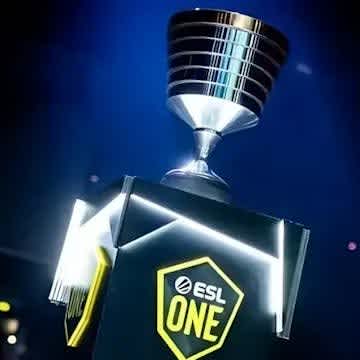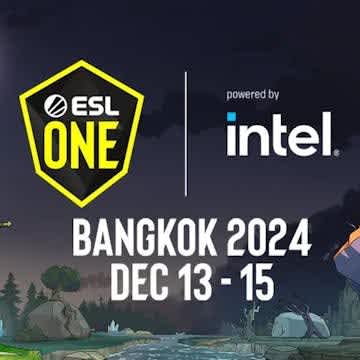Money Alone Won’t Fix The Tier 2 Dota Scene
Disclaimer: The views and opinions expressed in this article are those of the author and do not necessarily reflect the viewpoints of Rivalry.
Title image credit: DreamHack/Jennika Ojala
Money isn’t the solution to the problem that is Tier 2 (and 3,4,5) Dota. Don’t get me wrong, it would certainly help. But it isn’t the magic cure that people are broadcasting; there are deeper issues at play in the tier 2 scene that need to be navigated. In addition to the money. Like I said, it would help.
And yes, there is a TL;DR at the bottom.
First, an overview of the problem
Endless pros, journalists, teams, and personalities have discussed the problems for the tier 2 scene, but Chessie has a great recent summary.
This entire year of Dota, we have made a total of 17,500$ in TFT. Compare with my previous years in NA. This is not a financially viable situation, we may not have been the best team this season, but I truly believe I would have made a whole lot more in another region.
The Final Tribe made $52,000 in prize money the previous year, with less time as an existing team. Chessie’s team (Complexity) in the 2017-2018 season netted $119,250 in prize money. Complexity in the 2018-2019 season hit $71,550. As interested as I am in an overhaul that looks at team earnings, prize pool shares per region, and saturation levels - that is a distraction from the main point Chessie is looking to make. The Final Tribe was a reasonably successful team that barely missed their shot at TI, arguably in large part because of Liquid making roster changes. If that team had been playing in NA, they would have potentially found a larger income share from a region with less depth. No matter what region they're in, the prize money they won doesn't seem like an accurate measurement of the team's skill.
Switching regions shouldn’t be the answer, and regional depth shouldn’t be something that inhibits the playing pool of developing talent. It should strengthen it.
So what happened?
In the 2017-2018 season, we had a plethora of tournaments that were part of the DPC system. The top teams in each region were invited, and the minors usually only boasted a handful of tier 1 teams and then was filled with tier 2 teams. Majors were as fierce as ever, but we had 22 DPC events for a total of $13.5 million in DPC prize money and about $935,000 in third party international LANs. This year, we had 10 DPC events with $6.5 million available and approximately $2.5 million in third party international LANs. This is still all about the money - there was less of it in prize pools this year with less tournaments to give tier 2 teams a chance at LAN experience and a shot at prize pools. Making a living playing Dota when you aren’t at the top seems to have gotten harder with time, not easier. (Let’s also not forget that many are still waiting on the money from several of those tournaments).
Moving beyond the money (mostly)
The 2017-2018 season may have seemed flush with cash, but teams were TIRED. Endless qualifiers, sometimes with different TOs not playing very nice with schedules, pitted the same teams against each other again and again with brutal travel and playing schedules. The best teams accepted invites and appeared to ‘monopolize’ minors while tier 2 teams fought for the remaining spots. This year’s system tried to keep the big teams out of the minors, protecting the money and experience meant for developing players. Unfortunately, the ‘everyone must play qualifiers’ ruling kept the schedule packed and destroyed a huge chunk of the year that could be used by third party LANs or leagues.
This gets to the heart of the problem. There is zero incentive for league based format and online play, both from teams and from organizers. JoinDota League used to feature all the top teams, and now they struggle to maintain interest or team participation. What happened to the the various BTS cups? Or even the Summit X LAN needing to be rescheduled because of team commitment issues. NADCL has tried its hardest to add stability and growth in NA. What about Dreamleague? (Or rather, what will happen with it’s return this fall). Will their small weekly league even attract legitimate up and coming teams?
It isn’t that these opportunities don’t exist. Online cups, leagues, and tournaments are still around. The money isn’t great, the viewership certainly doesn’t attract large sponsors, and they aren’t as appealing as a DPC tournament. Therein lies the problem. Why would you stay on a roster that is “doomed” to a low tier league? Why would you give up playing qualifiers for a such a small prize pool? Why would advertisers sponsor something no one cares about?
Nothing is going to stop you from aiming for TI, and if you think you have the mildest chance of making it to a DPC event, you’ll probably try for it. I know it looks like a simple solution to just give these leagues more money so teams play them. That doesn’t fix anything - TI is worth over 30 million. Professional players aren’t trying to go pro and play it safe for a $5000 prize in a monthly league. They will always take the 0.001% (or less) chance of making it to TI. This isn’t their fault, this is how the system is set up. In order for any sustainable tier 2 system to exist, players need to buy into the concept.
So what are the problems, if not just money?
- The first issue is what I just mentioned - who would play? Valve tried to turn Battlecup into a way to give teams a shot at an easy spot in TI qualifiers. It didn’t work. There has to be some kind of DPC involvement or incentive, otherwise the league will be abandoned the moment there is a chance at a major or minor.
- How would you keep teams playing and engaged? Roster changes are frequent, how do you handle standins and changes over the tenure of a league?
- Who organizes it? Valve certainly won’t, and giving a single TO charge of the entire tier 2 dota scene gives far to much control to a third party - that isn’t Valve’s style.
- How much money is the right amount of money? Too little and players may turn to streaming or not take games entirely seriously. Too much and leagues become saturated with higher level teams that don’t belong there
- Players are less likely to build their brands and provide value to sponsors and team owners, which is necessary for longevity
Putting the checkbook to the right use
Let’s take the figures from the first DPC season. Valve contributed $6.75 million. They got a lot from this battlepass, so let’s bump that up to a $7 million investment into the DPC next season. These are just some examples to show how money could be distributed, I have no idea what numbers are actually fair and optimize the right incentives.
DPC Event budget: $3,250,000
Budget for TOs: $1,000,000
Qualifier budget: $750,000
League budget: $2,000,000
Step One: Combine the Major and Minor qualifiers.
- Top placing teams qualify to the Major, next placing teams go to the Minor
Step Two: Increase the teams at the Minor so there are two per region
- Compensate the the TO of the minor for losing an entire qualifier worth of viewership hours ($15K/Minor - $75K total)
- Compensate Major & Minor TOs for player transport and hotel costs ($100K/event - $1,000,000 total)
- Add back team pennants to Majors and Minors to generate revenue for teams and TOs
Step Three: Adjust prize distribution (slightly) for DPC events
- Remember that teams have spent 2-4 weeks on this event, taking home $2k each pre tax and sponsor cut is rough
- Prize money can often be taxed at 50%
- Sponsors take a cut, further decreasing what players take
Step Four: Add money to the qualifier placements
- $25K/region - $750K total
Step Five: Make a league out of the rest of the teams, including top X open qualifier teams
- Start the league two weeks following qualifiers
- Allow one player change before league start and a max of one standin during the league
- Run games Tuesdays & Wednesdays to avoid interference with 3rd parties as much as possible
- ~$40K/league (six regions) for each DPC round ~ $1,250,000 total
- Hire a different TO/organizer for different regions. $25K for each league - $750,000
- League ends before the Minor begins (giving teams some time off)
- Top two in the league are guaranteed a close qualifier spot for the next DPC
I am sure there are issues with this system (and probably a math error somewhere) - but we need to remember that as long as TI is the crown jewel with a massive prize pool, every single decision anyone involved makes will revolve around TI. We can’t fix Tier 2 Dota just by handing money out saying “make a league.” The system needs to be sustainable for everyone involved and invest in the right ideas, not invest for the sake of investing. Most importantly, the system needs to maintain the flexibility and individual spirit that is at the heart of Dota.
TL;DR
Problem:
Players will usually sacrifice small prize pools and team stability for a chance at TI. Any support for the Tier 2 system needs to be integrated into the existing DPC format but still allow roster and schedule flexibility. This system also needs to be financially viable for the third party organizers that Valve will rely on.
Solution:
Combine the Major and Minor qualifiers to free up the schedule, add prize money to the qualifiers, and create a midweek league out of the non qualified teams from each region. Give TOs money to run these leagues and reward teams with reasonable prize pools and guaranteed slots in the closed qualifier for the next DPC event.
We have given Valve over 90 million reasons to care. Now all we ask is that they create a system that everyone involved can care about.





